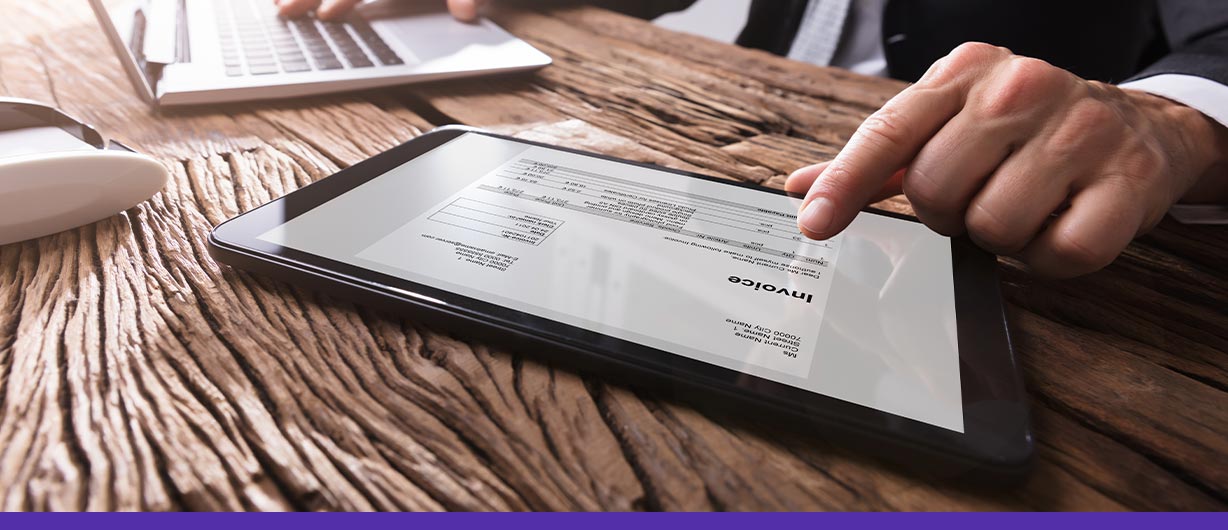June 14 2023 | By Wajiha Danish | 6 minutes Read

What is an invoice
Types of Invoices
Standard Invoice
Commercial Invoice
Recurring Invoice
Time-Based Invoice
Credit Invoice
Debit Invoice
Proforma Invoice
Final Invoice
Interim Invoice
Past Due Invoice
Prepayment Invoice
What are invoicing challenges?
Payments
Manual invoicing processes
Difficulty tracking invoicing
Inconsistent invoicing
False invoicing
Lack of automation
Lack of communication
Compliance issues
Billing disputes
What information should an invoice contain?
Invoice number
Date and vendor detail
Customer details
Description of products or services
Payment terms
Amount due
Payment instructions
Any applicable taxes or fees
Conclusion
An invoice is a commercial document that provides a detailed summary of goods or services, given by a seller to a buyer. It typically includes the quantity, description, price, total cost of the goods or services, and any taxes, discounts, or other fees.
In addition, an invoice usually includes the payment terms and conditions, such as the due date for payment. It may include the seller’s contact information, payment instructions, and any other relevant information related to the transaction.
As we have gone through the phenomena of what is an invoice, now is the time to learn its types.
The standard invoice is the most common type in business transactions. It includes details such as the date of the sale, a description of the goods or services provided, the quantity, the unit price, and the total amount due. It also includes the name and contact details of the buyer and seller.
It is a document used in international trade transactions. It includes details such as the description of the goods, the quantity, the unit price, the total value of the shipment, and the name and address of the buyer and seller. It is used to facilitate customs clearance and to calculate the applicable duties and taxes.
This type of invoice is used for transactions that occur regularly, such as monthly or annually. It includes details such as the frequency of the transaction, the amount due, and the duration of the agreement. It is used for subscriptions, rent, or utility bills.
A time-based invoice is used for services that are charged based on the time spent providing the service. It includes the hourly rate, the number of hours worked, and the amount due.
A credit invoice is issued when a buyer returns goods or services or when there is an adjustment to the original invoice. It includes details such as the original invoice number, the reason for the credit, and the adjusted amount.
A debit invoice is issued when an additional charge is added to the original invoice. It includes details such as the reason for the charge, the amount, and the original invoice number.
This type of invoice is a preliminary invoice sent to the buyer before the shipment of goods. It includes details such as the description of the goods, the quantity, the unit price, the total value of the shipment, and the name and address of the buyer and seller. It is used to provide the buyer with an estimate of the cost of the goods and to facilitate payment arrangements.
A final invoice is issued after a transaction or project. It includes the due amount, applicable taxes or fees, and payment terms. It is used to request payment for goods or services provided in full.
An interim invoice is issued during a long-term project or transaction. It includes details such as the work completed to date, the amount due, and the payment terms. It is used to request payment for work completed up to a certain point.
A past due invoice is issued when payment for goods or services has not been received by the due date. It includes details such as the original invoice amount, the amount that is past due, and any late fees or interest charges. It is used to remind the buyer of their outstanding balance and to request payment.
A prepayment invoice is issued when the buyer is required to make a payment before receiving the goods or services. It includes details such as the amount due, the payment terms, and the delivery or service date. It is used to request payment before providing goods or services.
Small businesses often face several invoicing challenges, including:
Small businesses may need help to receive payments on time, leading to cash flow problems and difficulties in paying suppliers, employees, and other expenses.
Some small businesses still use manual invoicing processes, which can be time-consuming and prone to errors.
Some small businesses may need help keeping track of their invoicing, especially if they have a high volume of transactions.
Inconsistent invoicing practices can lead to customer clarity and understanding.
Inaccurate invoicing can lead to disputes and delays in payment.
Many small businesses still need manual invoicing, which can be slow and time-consuming.
Poor communication between the invoicing department and other departments in the business can lead to errors and delays.
Some of the small businesses may need help to comply with invoicing regulations and requirements, leading to legal and financial problems.
Billing disputes can be time-consuming and costly for small businesses, especially if they need a formal resolution process.
In general, an invoice should contain the following information:
A unique identification number for the invoice can help the vendor and customer keep track of payments and transactions.
The date the invoice was issued, and vendor details include the name, address, and contact information of the vendor who provided the products or services.
It should include the name, address, and contact information of the billed customer.
A detailed description of the products or services, including the quantity, unit price, and total price.
It includes the terms agreed upon by the vendor and customer, including the due date and any applicable discounts or late fees.
The total amount due is the amount due for the products or services provided.
Information on how to pay the invoice, such as the vendor’s bank details or payment portal.
Depending on the products or services provided and the location of the transaction, taxes or fees may need to be included on the invoice.
In conclusion, an invoice is a document that outlines the details of a transaction between a buyer and a seller, including the goods or services provided, the price, and the terms of payment. Invoicing is a critical part of any business, but it can also be a challenging process. Some of the challenges of invoicing include ensuring accuracy, dealing with late payments, and complying with legal and tax requirements. There are various types of invoices, including commercial invoices, pro forma invoices, and interim invoices. Each type of invoice serves a specific purpose and may be used in different situations.
Subscribe for business tips, tax updates, financial fundamentals and more.
MORE BLOGS

If you’re a small business, we will absolutely get it if you say you’re having a hard time choosing a payment platform for your company. And […]
Learn More →
When it comes to accounting, businesses often face a confusing question: which accounting method should we adopt? The choice typically boils down to the cash basis […]
Learn More →
Driving for Uber or delivering with Uber Eats can be a flexible and rewarding way to earn money. But when tax season rolls around, many drivers […]
Learn More →